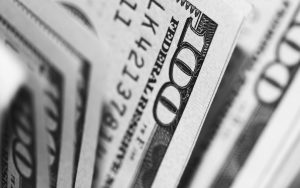Forex trading is one of the most popular forms of trading in the world. It is a decentralized market where currencies are traded 24 hours a day, five days a week. The forex market is so large that it has become the largest financial market in the world, with an average daily turnover of over $5 trillion. Forex trading is usually done with the US dollar (USD) as the base currency. However, traders can also trade non-USD currencies.
When trading non-USD currencies, traders need to understand how the currency pair works. A currency pair is a quotation of two different currencies, with the value of one currency being quoted against the other. For example, the EUR/JPY currency pair shows the value of the euro against the Japanese yen. In this pair, the euro is the base currency, and the yen is the quote currency.
When trading non-USD currencies, traders need to consider the exchange rate. The exchange rate is the value of one currency in relation to another. For example, if the EUR/JPY currency pair is trading at 131.85, it means that one euro is worth 131.85 Japanese yen. Traders need to be aware of the exchange rate because it can affect their profits and losses.
Traders also need to consider the spread when trading non-USD currencies. The spread is the difference between the bid price and the ask price. The bid price is the price at which a trader can sell a currency, and the ask price is the price at which a trader can buy a currency. The spread is usually expressed in pips, which is the smallest unit of measurement for currency pairs. The spread can be wider or narrower depending on market conditions and liquidity.
When trading non-USD currencies, traders need to consider the volatility of the currency pair. Volatility refers to the degree of price movement of a currency pair. A highly volatile currency pair can move up or down quickly, which can be an opportunity for traders to make profits or losses. However, high volatility can also be risky, as it can lead to sudden and unexpected losses.
Traders also need to consider the economic fundamentals of the countries whose currencies they are trading. Economic fundamentals refer to the economic indicators and data that affect the value of a currency. For example, inflation, interest rates, and GDP growth can affect the value of a currency. Traders need to keep an eye on economic news releases and data to make informed trading decisions.
In conclusion, trading non-USD currencies requires a good understanding of the currency pair, exchange rates, spread, volatility, and economic fundamentals. Traders need to do their research and analysis to make informed trading decisions. Forex trading can be a lucrative form of trading, but it also carries risks. Traders need to manage their risks by using stop-loss orders and other risk management tools. With the right knowledge and skills, traders can make profits trading non-USD currencies in the forex market.





